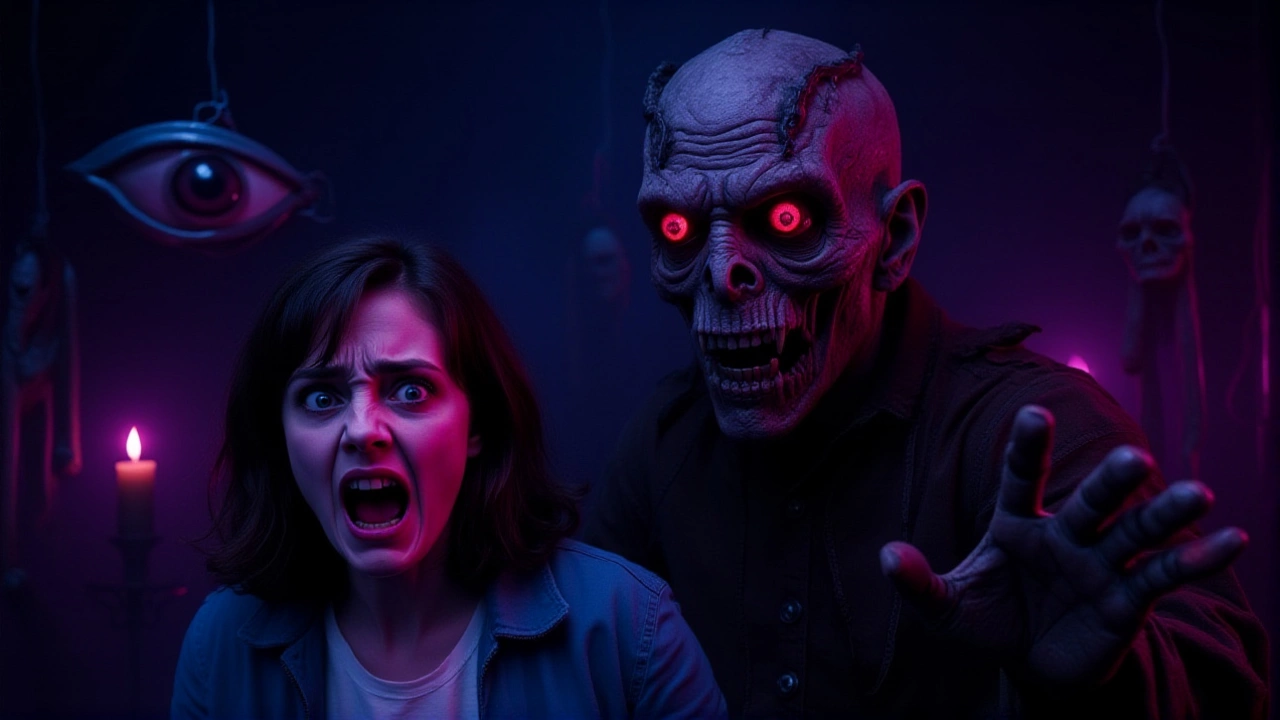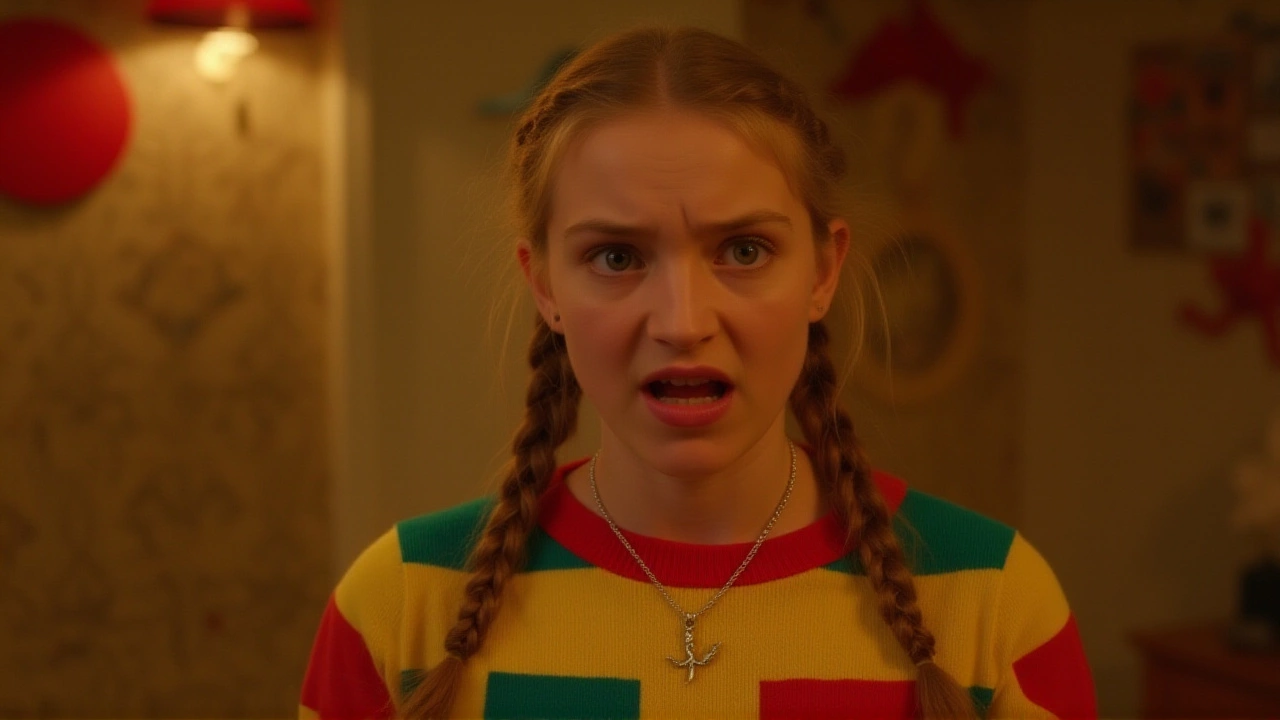
When Netflix replaced twin sisters Anniston Price and Tinsley Price with Nell Fisher as Holly Wheeler in Stranger Things Season 5, it wasn’t just a casting change—it was the quiet end of two childhood careers. The switch, confirmed during production that began in January 2024 at Netflix’s Atlanta studios, came after an unprecedented three-year gap since Season 4 wrapped in September 2021. The Price twins, who were barely six years old when the show premiered on July 15, 2016, portrayed Mike and Nancy Wheeler’s younger sister across all four prior seasons. Now, they’ve vanished from the industry entirely.
Why Replace a 10-Year-Old? The Age Paradox
Here’s the thing: Holly Wheeler’s canonical age in Season 5 is still about 10. But the main cast—Millie Bobby Brown, Noah Schnapp, Gaten Matarazzo—had visibly grown from tweens to teenagers during the hiatus. The Duffer Brothers, Matt Duffer and Ross Duffer, opted for a 1.5-year narrative leap to match the actors’ real-life maturation. That meant Holly needed to look older too. The Prices, now 14 to 16, were perfectly within the range for playing a 10-year-old—child actors often play roles several years younger. But Netflix’s team, reportedly concerned about visual dissonance in group shots, chose a new actress: Nell Fisher, a British-New Zealand performer with no prior major credits.It’s not the first time Stranger Things has swapped actors for continuity. Vecna’s transformation from Will Chase to Jamie Campbell Bower between Seasons 3 and 4 set a precedent. But this time, the change hit differently. Holly wasn’t a villain or a plot device—she was the quiet, awkward kid in the background, the one who said “I’m not scared” while holding a stuffed animal. Fans noticed. And they wondered: Why not just age her?
The Twins’ Quiet Exit
The Prices never complained. Not publicly. Not even when the news broke. Instead, on an unannounced day in late 2023 or early 2024, their joint Instagram account posted a single comment under a clip of Nell Fisher as Holly: “We loved this scene! Can’t wait to see where you take our girl, Holly. We know it’s going to be amazing!” No bitterness. No explanation. Just warmth.It’s telling that they’ve left acting with zero other credits. Their entire professional identity was built on one role, spanning roughly 30 episodes over eight years. Industry estimates suggest they earned between $50,000 and $100,000 per episode during their peak—solid for child actors, but not life-changing. Still, they weren’t chasing fame. They were just kids who happened to be on a global phenomenon.
Now, they’re gone. No interviews. No agency. No social media updates since that post. Their departure feels less like a firing and more like a gentle retreat—like they stepped off a stage after the final curtain, knowing they’d done their part.

The New Holly, The Final Season
Nell Fisher steps into a role that, in Season 5, is no longer background noise. With the main characters now in high school, Holly’s been given more screen time—more emotional weight. She’s not just Mike’s little sister anymore; she’s a witness to trauma, a voice of innocence in a world tearing itself apart. Fisher’s casting was reportedly chosen for her ability to blend into the ensemble without overshadowing the leads—a subtle, mature performance.Season 5 is being released in three parts: Volume 1 is already streaming, with Volume 2 dropping December 25, 2024, and the finale on December 31, 2024. For a show that has drawn nearly 260 million subscribers to Netflix as of Q3 2024, this is the final bow. And Holly’s transition mirrors the show’s own evolution: from quirky nostalgia to something heavier, more grown-up.
What This Means for Child Actors in Streaming
The Price twins’ exit highlights a quiet crisis in child entertainment: longevity isn’t rewarded. Studios want continuity, but they don’t always want the same kids growing up on screen. Even when it makes sense—when the actor’s aging aligns with the character’s—it’s often easier to recast than to risk audience discomfort.Compare this to Game of Thrones, where child actors like Isaac Hempstead Wright (Bran Stark) aged naturally into pivotal roles. Or Harry Potter, where the cast grew up together. Stranger Things chose a different path. Maybe it’s because the Duffer Brothers always envisioned the show as a finite story. Maybe it’s because Netflix, with its $17 billion annual content budget, treats casting like a puzzle piece—swap it if it doesn’t fit the new frame.
For the Prices, the decision may have been inevitable. They were never marketed as stars. Their faces never appeared on billboards. They were part of the texture of Hawkins—not its headline. And now, they’ve stepped into real life.

What’s Next for Holly and the Series?
With Season 5’s final episodes arriving before the end of 2024, the world will say goodbye to Hawkins for good. Holly Wheeler’s arc—once a footnote—now feels like a quiet metaphor: children who grow up in the spotlight, then disappear when the story moves on.Netflix won’t comment on casting decisions. The Duffer Brothers have remained silent. But fans are already speculating: Will Holly survive the final battle? Will she be the one to carry the memory of Eleven and Will and Dustin into adulthood? Fisher’s performance will determine that. And the Prices? They’ve already moved on.
Frequently Asked Questions
Why did Netflix recast Holly Wheeler if she was still the right age?
Despite Holly’s canonical age of 10 in Season 5, Netflix’s creative team wanted visual consistency with the rapidly aging main cast. The three-year gap between seasons meant actors like Millie Bobby Brown and Noah Schnapp had grown from teens into young adults. Even though Anniston and Tinsley Price were only 14–16 during filming—still within the acceptable range for playing a 10-year-old—producers feared audience discomfort with mismatched aging in group scenes. Recasting was seen as a cleaner narrative solution.
Did the Price twins speak out negatively about being replaced?
No. On their joint Instagram account, the twins posted a supportive message under a clip of Nell Fisher as Holly: "We loved this scene! Can't wait to see where you take our girl, Holly. We know it's going to be amazing!" They offered no criticism, no explanation for their exit, and have since removed themselves from all public-facing acting platforms. Their response was notably gracious, suggesting the decision was mutual or emotionally understood.
How much did the Price twins earn on Stranger Things?
Exact figures are undisclosed, but industry standards for child actors in recurring roles on major streaming shows range from $50,000 to $100,000 per episode. The Prices appeared sporadically across four seasons, totaling about 30 episodes. While not a fortune, this likely provided a stable income during their formative years. Their earnings were modest compared to lead actors, but substantial for child performers with no other credits.
Is Nell Fisher a well-known actress?
No. Before Stranger Things, Nell Fisher had no major screen credits. Identified as a British-New Zealand performer by outlets like LADbible, she appears to be a newcomer. Her casting was likely based on screen tests and chemistry with the main cast rather than prior fame. This aligns with Netflix’s trend of choosing fresh faces for pivotal supporting roles, especially when continuity demands a subtle shift in appearance.
Will Holly Wheeler have a major role in Season 5?
Yes. Unlike earlier seasons where Holly was mostly in the background, Season 5 expands her role significantly. She’s now more involved in key family dynamics, particularly with Mike and Nancy. Her character serves as emotional grounding amid the chaos—representing innocence and resilience. Her expanded presence makes her transition from the Price twins to Nell Fisher more consequential than it initially seemed.
What does this mean for future child actors on long-running shows?
The Stranger Things recasting signals a growing trend: streaming platforms prioritize narrative cohesion over actor longevity, even when it’s feasible to age the child naturally. This could discourage families from committing to long-term roles, fearing their children will be replaced mid-series. It also raises ethical questions about how studios manage the transition from childhood to adolescence in high-profile productions—especially when the child has no other career path.
 Sports and Events
Sports and Events